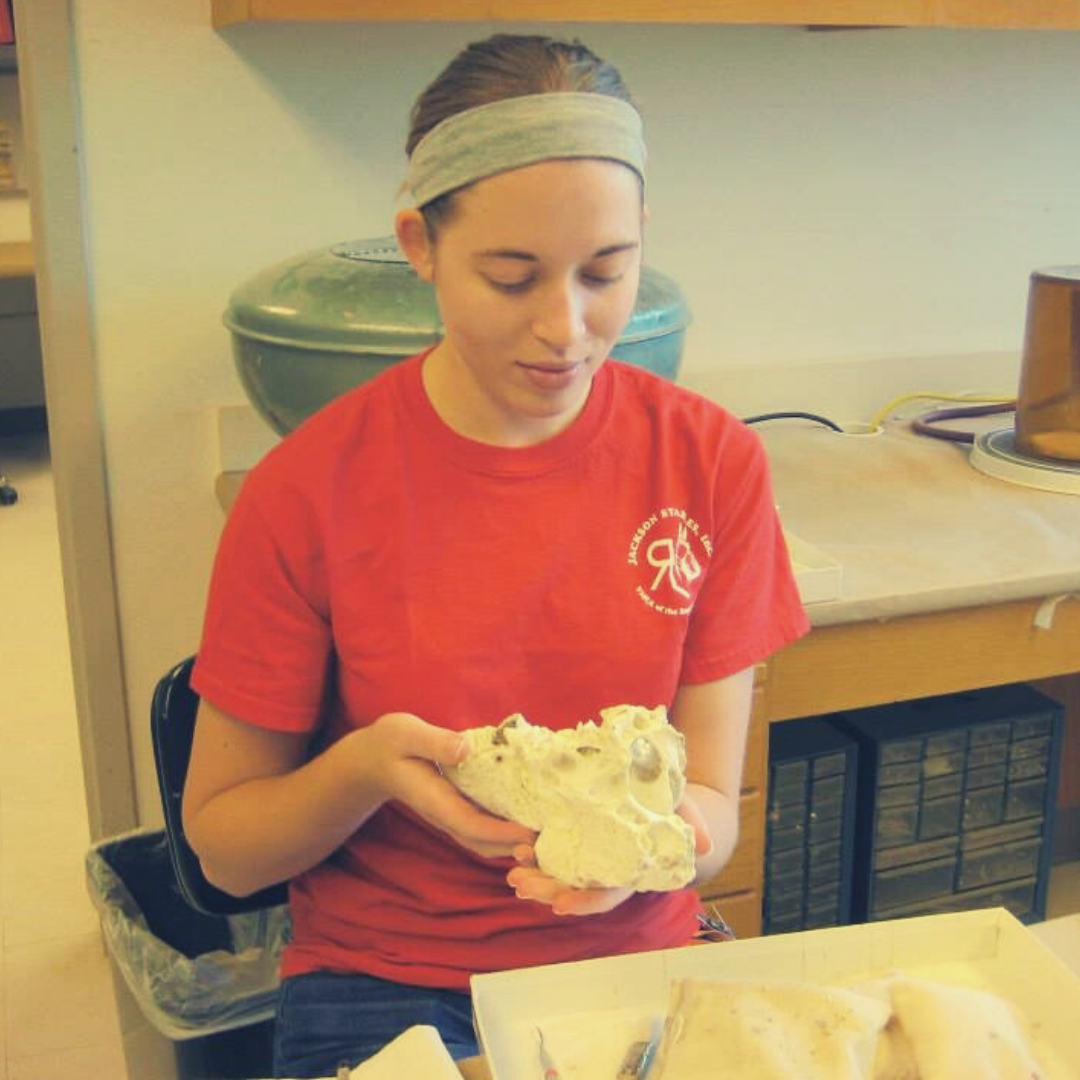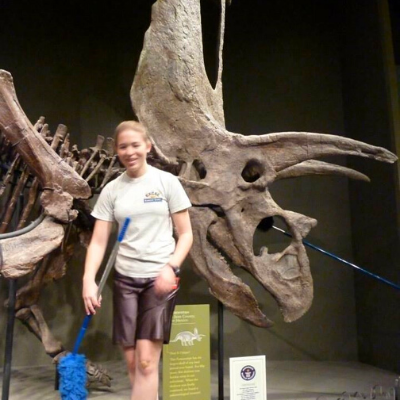Museums as Self-Care Spaces: Part 2
July 31, 2020

Many of our arts and culture organizations in the community have suffered greatly due to the COVID-19 pandemic. In certain cities, some humanities organizations may even close their doors for good.
To help showcase the necessity of these establishments, we present this blog series, which features different perspectives of how museums, zoos, and science centers (to name a few) can act as self-care spaces for inspiration, peace, and maybe even a little healing.
----------------------------------------------------------------------

(Left Photo: Collections Manager Jordan Adams dusts the Pentaceratops at the Sam Noble Museum in Oklahoma.
Right Photo: Jordan cleans a fragment of occipital condyle from a Gompotherium at the Sam Noble Museum.)
I have been going to museums since I was a young girl with my parents, as many people do, but it was during my junior year of high school in Oklahoma City that I truly began to appreciate these institutions in a different way.
It came as a bit of a surprise to my parents (and to myself, honestly) when I declared that I had fallen in love with paleontology, the study of fossils! The idea that these strange creatures had once roamed the earth fascinated me, and so my parents helped me apply for a special summer program that was being offered by the Sam Noble Oklahoma Museum of Natural History in Norman, OK. This program would have high school students working at a real dig site alongside a professional to learn about the field and gain experience.
I wanted to go so badly! But I was not accepted.
My parents then enlightened a fairly dejected (and somewhat disgruntled) young Jordan of another option: volunteering. It turned out that the Sam Noble paleontology department accepted volunteers to work in the vertebrate paleontology lab after taking a training course. It was a “Sign me up!” sort of moment.
.png)
With my best friend by my side, I took the training course and learned how to handle, clean, mold and repair fossils brought in from the field and prepare them for storage. It was an amazing experience that set the stage for my future career.
After volunteering during my last two years of high school, I began college at Oklahoma State University (Go Pokes!), which put me too far a distance from Sam Noble to volunteer. However, after two years, I decided to transfer to the University of Oklahoma in order to pursue… not paleontology, but anthropology. The study of human societies and culture had become my new area of interest, but I still loved dinosaurs!
.png)
I moved to Norman and once again began volunteering at the Sam Noble Museum. It felt like coming back to my second home. During the school semesters, I would volunteer in the lab for two hours on Tuesday and Thursday evenings, and it was during those sessions that I forgot about the stress of school and the looming deadlines and simply focused on cleaning and repairing fossils while spending time with other wonderful people. This was when I realized that volunteering in a museum wasn’t just enjoyable to me, it was important. It gave me a place to relax, take my time, and immerse myself in a task I truly enjoyed.
(Left Photo: Jordan dusts dinosaurs at the Museum of World Treasures.
Right photo: Jordan participates in a camel dig with the Sam Noble Museum.)
Eventually my new husband and I moved to Wichita where he was to begin his career in the Air Force at McConnell AFB and I… well, I hadn’t quite figured out what I would be doing! So, I found a museum. The Museum of World Treasures to be specific, and I applied to be a volunteer and work with their paleontology collection. I did this (and worked in the gift shop) for a full year before returning to school at Wichita State University to earn my masters in anthropology with a focus in museum studies.
Who could have guessed that, two years after leaving, I would be back at World Treasures as the caretaker of the diverse collection I had grown so fond of! Now, I have my own small army of amazing and talented volunteers that help with the many projects within the collections department, and I can only hope this place is as meaningful to them as the Sam Noble vertebrate paleontology lab was to me.
----------------------------------------------------------------------
Feeling inspired? We want to hear what these places mean to you. Enter your own "Museums as Self-Care" blog submission to make your voice heard!
